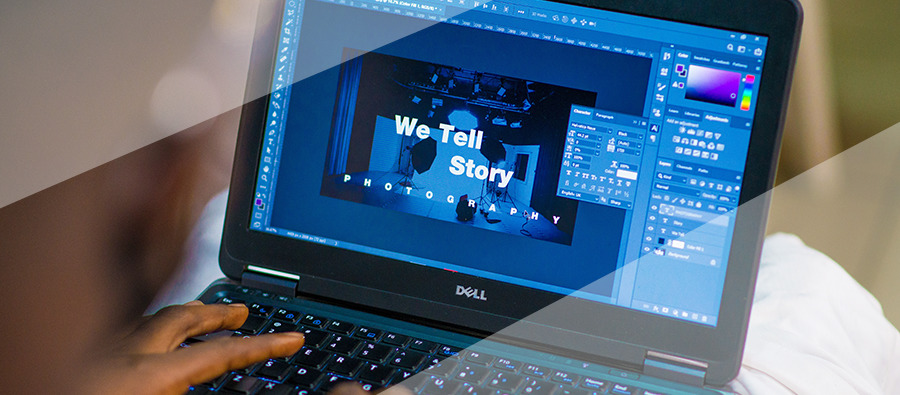What is Graphic design? It is the art and profession of selecting and arranging visual elements, such as typography, images, symbols, and colors, to convey a message to an audience. Sometimes graphic design is called “visual communications,” a term that “emphasizes its function of giving form, the design of a book, advertisement, logo, or website to information.” An important part of the designer’s task is to combine visual and verbal elements into an ordered and effective whole for marketing. Graphic design is, therefore, a collaborative discipline. Writers produce content, and photographers and illustrators create images that the designer incorporates into a complete visual communication that captures a client’s branding strategy.
We can break down the skills of a graphic designer into three major categories: core skills, modern requirements, and soft skills.
CORE SKILLS: COLOR, LAYOUT, AND TYPOGRAPHY
Core skills would be one of the first skills learned. You usually learn these through college, or like some designers, I know they can be self-taught. The first would be Color theory, “the collection of rules and guidelines designers use to communicate with users through appealing color schemes in visual interfaces.” The second is layout and grid; a grid is a system for organizing a layout. The layouts could be for print (like a book, magazine, or poster) or for the screen (like a web page, app, or other user interfaces). There are many different types of grids, and they all serve different purposes. The third would be Typography and typesetting, which is the process of arranging or composing text ready for printing.
In contrast, typography is the “art and technique” of arranging text so that it is visually appealing and readable. This is very important because it lays down the foundation. As soon as you enter the work world, you’ll need to have at least a passing understanding of modern requirements, and increasingly, a good amount of soft skills. Apart from branding and illustration, modern requirements are all the skills tacked on to the role of graphic designer, and that also depends on your role and depends on what kind of agency you work for, or the career path that you end up in, that may well end up being the case.
MODERN REQUIREMENTS: ESSENTIAL SKILLS
The second would be modern requirements because they are essential for emerging graphic designers, and once you have most of these down, you will have an even more diverse portfolio. This includes branding, Illustration, UI/UX, front-end design, web development, motion design, and marketing.
SOFT SKILLS: INTERPERSONAL SKILLS
Lastly, the third would be Soft skills. These aren’t exclusive to graphic design, but they are important to acquire. Nearly every job on the market today calls for them. But, they get special mention as, increasingly, these skills are vital, because many designers can overlook them. Soft skills include interpersonal (people) skills, communication skills, listening skills, time management, and empathy, among others. Some workplaces only take the time to see if you have acquired skills such as core skills and modern requirements, and soft skills often get entirely ignored.
However, it’s these skills that are just as important, ultimately setting you apart from other candidates. In truth, you can learn the first two categories in a fairly short amount of time. On the other hand, soft skills require more time to develop. So, the earlier you jump on them, the better.
BONUS SKILL: COMMUNICATING IDEAS
Another great skill that sets you apart from other candidates is communicating your ideas and the meaning behind your design. Graphic designers are often described as problem solvers, something that needs communicating, and our job is to work out the best way to do that. Now, to deliver the best service, and create the best branding for your clients, anticipating their needs and problems before they do should be a standard part of the service. To get your way, you must first clearly communicate how, why and what is the reason behind every design. Having fantastic ideas is a strong start, but not communicating them will render them meaningless. Your clients and colleagues need to understand how you came up with your ideas and why you think they’re the best solution. After all, we are trying to create designs to communicate ideas and send a message, so understanding the mechanics of communication is fairly essential.
Technical skills are undoubtedly important, and they can help you prove your ability to handle the work that’s waiting for you and deliver final projects that work. However, all the technical skills in the world can’t make a project run smoothly, efficiently, and harmoniously. So before they bring you on board, employers will want to make sure you have the soft skills needed to complement your technical abilities.


